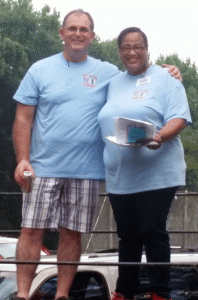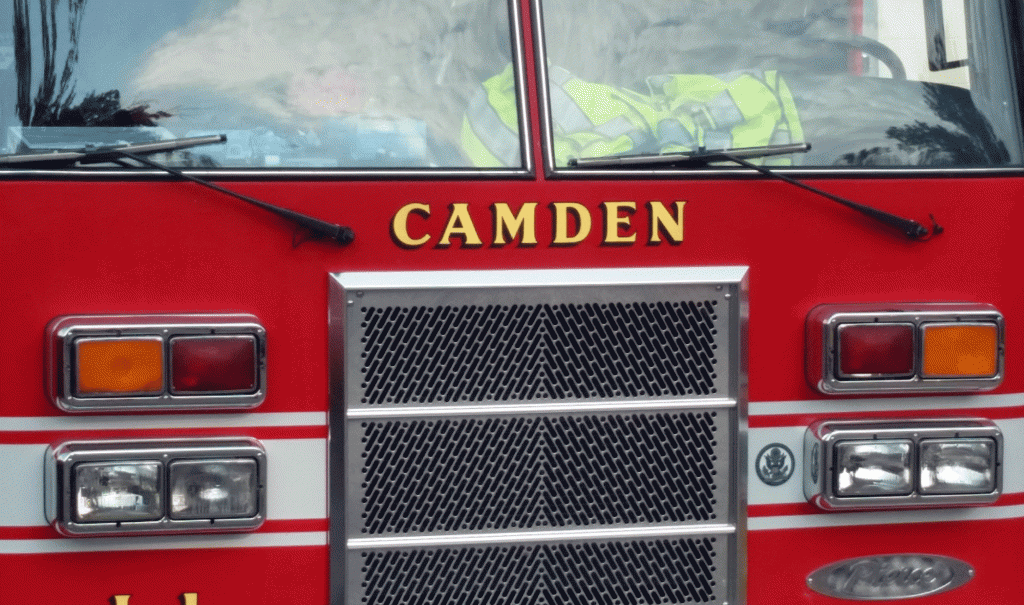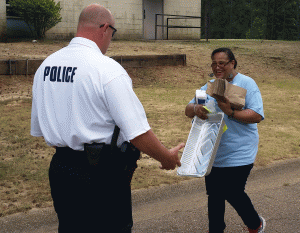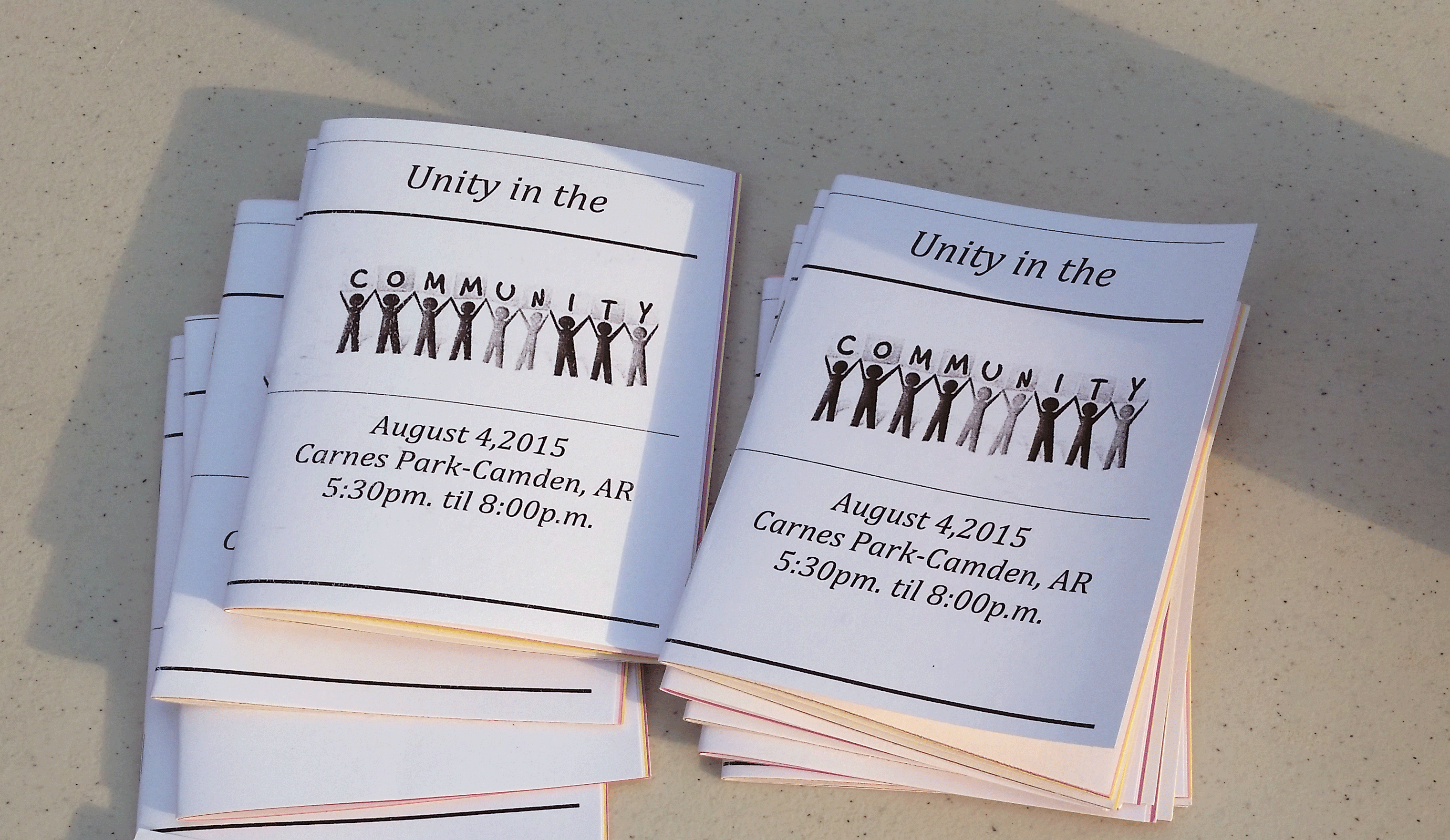UALR Institute on Race and Ethnicity helps bring unity to Camden
An Arkansas town has embraced an open dialogue about race and ethnicity that participants hope can serve as a strong example to the rest of the nation.
On Tuesday, Aug. 2, the residents of Camden, Arkansas, celebrated the results of a five-year partnership between the University of Arkansas at Little Rock Joel E. Anderson Institute on Race and Ethnicity and Camden’s Unity in the Community Committee (UIC) aimed at improving race and ethnic relations in the community.
“In the Delta and the southeast and southcentral part of Arkansas, there is little dialogue on race relations in general,” said John Kirk, director of the UALR Institute on Race and Ethnicity. “There are even fewer forums and a greater need for a dialogue in these smaller rural communities.”
Providing open forums where residents can discuss these issues developed a community that is more understanding to race and ethnicity, Kirk said.
The staple of the Camden campaign is the annual National Night Out celebration, a community-building campaign that promotes police-community partnerships and neighborhood camaraderie with live music, food, and games. This year’s Camden event was held from 6-8 p.m., Aug. 2, in Camden’s Carnes Park.
Camden hosted its first National Night Out in 2014 with more than 300 people. The event grew to over 500 people in 2015, and this year’s goal is to host more than 1,000.
To the people of Camden, a picturesque town of 12,000 residents that lies along the shores of the Ouachita River two hours south of Little Rock, this event provides a place where neighbors can get to know one another and build the trust necessary to keep a community strong.
“Once you meet somebody, and you have someone looking out for your best interests, it develops relationships,” said Matt Stone, a business owner who is celebrating his 30th anniversary of moving to Camden. “When people know each other, they can develop a rapport and trust and help each other. You are less likely to jump to conclusions with someone you know.”
Forming a partnership for Camden
When the news of riots in Ferguson, Missouri, reached Camden, the members of the Unity in Community Committee realized they were on the right track, Stone said.

By 2014, the committee had already been meeting for three years. With images of communities such as Ferguson fresh in their minds, Camden citizens wondered what might happen to their town if underlying issues of racial tensions were not addressed.
“We wanted to be proactive in promoting racial healing in Camden,” Stone said. “When you look at what happened in Ferguson, Missouri, we knew we were headed in the right direction by creating a forum where problems could be addressed through the legal system instead of spilling into the streets.”
With help from the Institute on Race and Ethnicity, Camden residents banded together to make sure their town is not torn apart by the racial divides that have rocked other communities.
Camden’s Unity in the Community Committee is made up of community members and civic leaders who want to heal racial division and foster unity among the citizens of Camden.
More than five years ago, Stone heard former UALR Chancellor Dr. Joel Anderson, who retired on June 30, speak about the efforts of the Institute on Race and Ethnicity.
“The institute hoped to come into a community and help people heal and grow. I asked what would be involved in getting Camden to be the first community that the institute helped,” Stone said.
So Stone called former Camden Mayor Chris Claybaker, Bishop Chester Thompson, and Dr. Larry Braden to see if they were interested in exploring the opportunity.
The Institute on Race and Ethnicity has been working with Camden residents since 2011. Under the leadership of Dr. John Miller, a member of the Chancellor’s Committee on Race and Ethnicity, a forerunner of the institute, Camden formed a committee to organize the effort.
Members held focus groups and analyzed the results, organized town hall meetings where issues of race and ethnicity could be discussed openly, and helped residents form goals for unity.
The institute facilitated the original town hall meetings in Camden and trained the committee members to set objectives and handle the dialogue during the meetings.
“Dr. John Miller was an inspiration to the whole group, and then Dr. John Kirk has been great to work with. The whole experience has been positive,” Stone said.

Facing the issues
Some of the challenges the institute discovered were that people in Camden avoided discussing issues of race and also felt divided along poverty lines.
“Camden faces the same issues as a lot of rural towns — depopulation, a history of strained race relations, a lack of employment. If you don’t have a forum for dialogue and a place to talk about those things, those small communities can be fairly isolated,” Kirk said.
“They can break up into different racial areas and enclaves, and it can be difficult to facilitate conversation across those lines. It is important to break those barriers to open up conversations to handle those more pressing community issues,” Kirk said.
Members of the Camden committee confronted these deep-seated issues with an awareness campaign. As part of the campaign, they hosted community meetings where these topics could be discussed openly and honestly. They also held community events to foster resident relationships.
“We had to bring these issues to the forefront for awareness,” said Janice White, a fourth-grade teacher and co-chair of the community committee. “People were not aware that these personal feelings were actually there. Whether racism or the division actually existed was one thing, but how people felt about it was another. Perception is so important. We were trying to close the gaps for the feelings of the people.”
Coming together as a community
One of the largest gaps committee members faced was the perception of Camden between black people and white people.

“When we talked to white people, we asked them how was Camden? How have things changed for the betterment of Camden since the 1970s?” White said. “Some white people would say it’s an 8 or 9. When we posed that same question to black people, they would say 4, 5, or 6. So right there we knew the perception was different for blacks than whites. That is when we started having dialogue. What can we do to change that?”
Camden residents responded that the people did not spend enough time together as a community.
“People said we don’t do anything together. We work together, our children play sports together, but there was not any coming together outside the few interracial churches we have. For the most part, Camden’s churches are still divided. Our goal is to continue to hold more events that will bring people together to socialize and communicate. We want to break down some stereotypes that cause division,” White said.
In addition to National Night Out, the committee holds monthly meetings where members discuss ongoing issues. Committee members also speak with church congregations to raise awareness about issues of diversity and how to unify the community.
To the members of the committee, the changes since the Institute on Race and Ethnicity first visited Camden are abundant.
“Before, these issues were like the elephant in the room that no one wanted to recognize or acknowledge,” White said. “Now, people in Camden can openly talk about these issues and bring resolutions without feeling threatened.”
